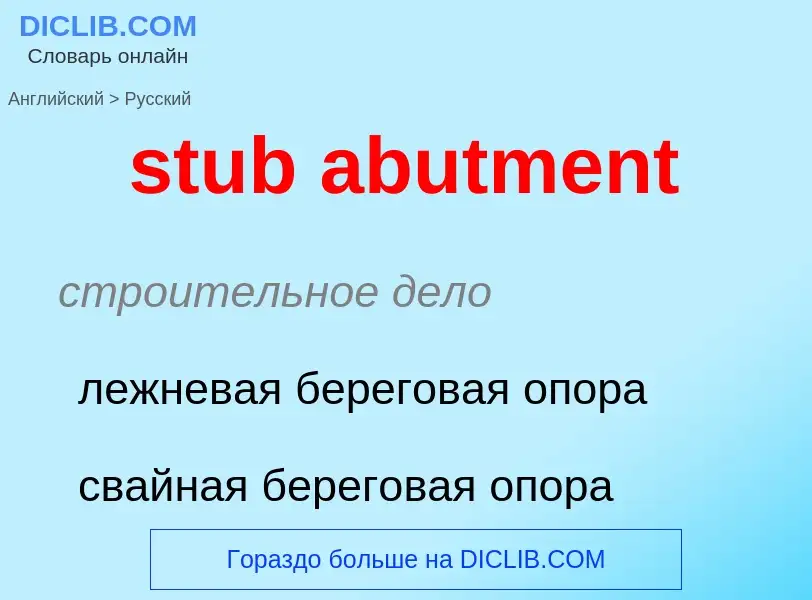Translation and analysis of words by ChatGPT artificial intelligence
On this page you can get a detailed analysis of a word or phrase, produced by the best artificial intelligence technology to date:
- how the word is used
- frequency of use
- it is used more often in oral or written speech
- word translation options
- usage examples (several phrases with translation)
- etymology
stub abutment - translation to russian
строительное дело
лежневая береговая опора
свайная береговая опора
общая лексика
настроечный шлейф
Definition
Wikipedia

In microwave and radio-frequency engineering, a stub or resonant stub is a length of transmission line or waveguide that is connected at one end only. The free end of the stub is either left open-circuit, or short-circuited (as is always the case for waveguides). Neglecting transmission line losses, the input impedance of the stub is purely reactive; either capacitive or inductive, depending on the electrical length of the stub, and on whether it is open or short circuit. Stubs may thus function as capacitors, inductors and resonant circuits at radio frequencies.
The behaviour of stubs is due to standing waves along their length. Their reactive properties are determined by their physical length in relation to the wavelength of the radio waves. Therefore, stubs are most commonly used in UHF or microwave circuits in which the wavelengths are short enough that the stub is conveniently small. They are often used to replace discrete capacitors and inductors, because at UHF and microwave frequencies lumped components perform poorly due to parasitic reactance. Stubs are commonly used in antenna impedance matching circuits, frequency selective filters, and resonant circuits for UHF electronic oscillators and RF amplifiers.
Stubs can be constructed with any type of transmission line: parallel conductor line (where they are called Lecher lines), coaxial cable, stripline, waveguide, and dielectric waveguide. Stub circuits can be designed using a Smith chart, a graphical tool which can determine what length line to use to obtain a desired reactance.



